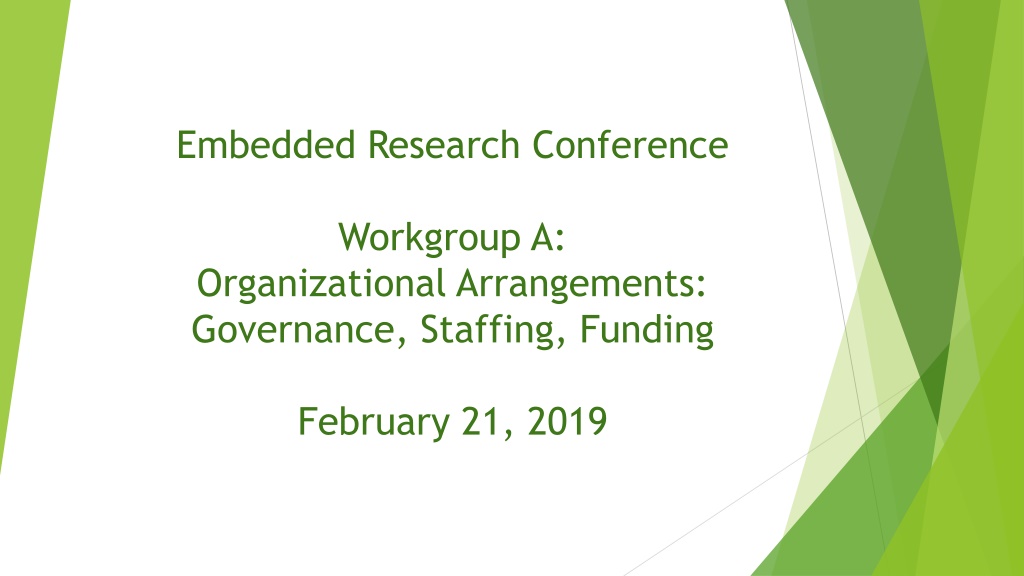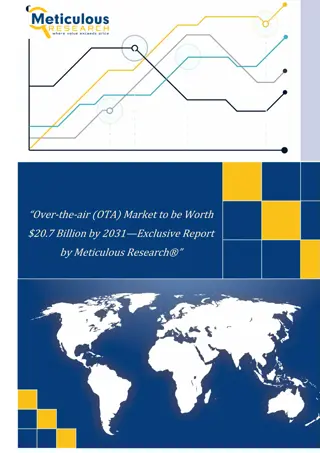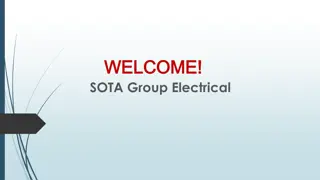
Strategies for Successful Embedded Research Workgroups
Explore the organizational arrangements, vision, current challenges, and recommendations for research units within embedded research workgroups. Discover ways to overcome barriers, cultivate relationships with operational leaders, and develop effective career trajectories for staff members.
Download Presentation

Please find below an Image/Link to download the presentation.
The content on the website is provided AS IS for your information and personal use only. It may not be sold, licensed, or shared on other websites without obtaining consent from the author. If you encounter any issues during the download, it is possible that the publisher has removed the file from their server.
You are allowed to download the files provided on this website for personal or commercial use, subject to the condition that they are used lawfully. All files are the property of their respective owners.
The content on the website is provided AS IS for your information and personal use only. It may not be sold, licensed, or shared on other websites without obtaining consent from the author.
E N D
Presentation Transcript
Embedded Research Conference Workgroup A: Organizational Arrangements: Governance, Staffing, Funding February 21, 2019
Workgroup vision, aims and goals Create a governance best practices across settings Demonstrate the value of embedded research to people from different perspectives Operational leaders Funders Structure, fund, and create a culture of embedded research (ER) to achieve the best outcomes for patients
Current state: gaps, opportunities External context Changing demands on systems, e.g. value, population health Wide variation in ER across settings Diffuse -> small units -> large units Range of funding streams Reporting, governance and accountability (oversight boards, C-suite) Portfolio problems of varying urgency
Barriers to achieving vision Tension between operational priorities and external funding opportunities Fragmented departments across systems (e.g. IT, research, analytics, QI) Academic culture & incentives Caste system Promotion & tenure Potential conflicts when findings do not align with system priorities/needs
Recommendations for Research Units Cultivate relationships w operational leaders, C-suite Culture and language (speak CFO; research) Develop a portfolio of internally funded projects with a mix of timing and deliverables Keep leadership apprised of progress Set research goals in alignment with operational goals and overarching health system goals Bidirectional priority setting & methods choices Shared accountability Pilot grant program driven by system priorities
Recommendations for Research Units Develop career trajectories Internal career ladder Non managerial leadership roles for technical experts External recruitment Guest lectures, national fellowship programs (DSSF) Partner with schools of public health, business for internships Include all clinical disciplines (RN, PA, PT, etc )
Recommendations for research funding Increase funding for: Training programs (fellowships, targeted opportunities) Dissemination & implementation Novel funding mechanisms (e.g. rapid response, interim deliverables) Engage the development office Develop business case/value prop for donors Leverage non-profit community benefit funds
Recommendations for health system leaders Include champion for ER in C-suite Establish external advisory boards/input Include ER in strategic plan and metrics in dashboard Novel funding mechanisms (e.g. shared savings, franchise models) Provide academic affiliations & titles to support recruitment
Recommendations for other stakeholders Create a national home/association for embedded research and share: training & funding opportunities, templates/samples Create a broad-based international/national database for sharing findings, practices, etc. that isn t a journal benchmarks of ER program with others to create more standardization across systems Metrics to evaluate assess value of ER program (beyond pubs/grants) Develop a common lexicon Ensure that relevant training programs & accrediting bodies (ACGME, LCME) have a healthcare delivery science core competency
Next steps Build on this meeting Convene annually? Disseminate results Create publication opportunities, e.g. special issues w JGIM, others Collaborate across systems to develop pilot funding










